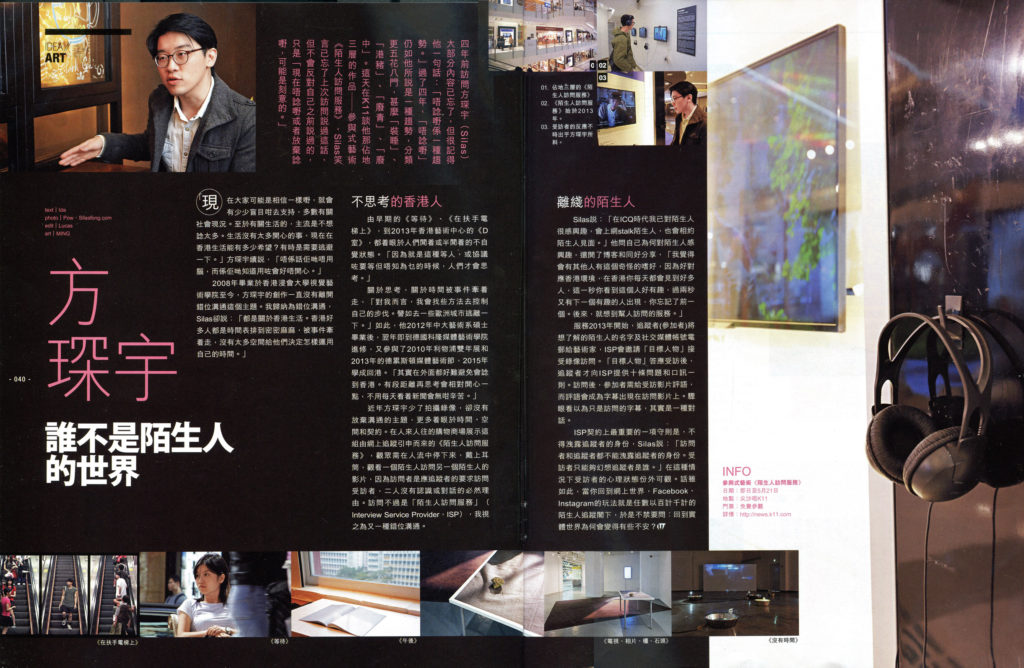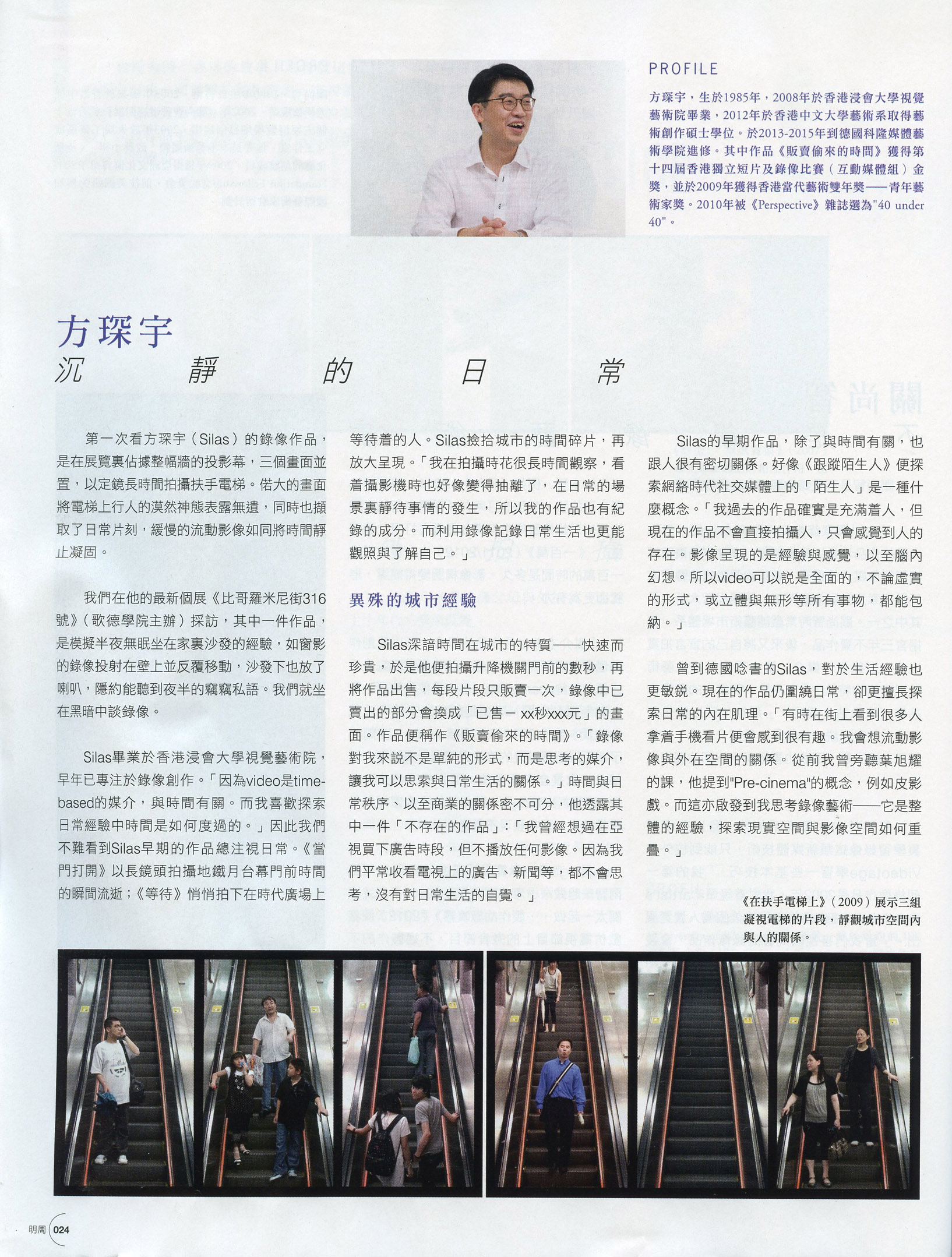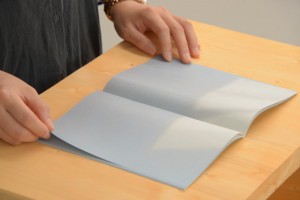SAD School of Artists Development: Silas Fong
Leeji Hong (Curator, National Museum of Modern and Contemporary Art)
2020
There is a Korean expression ‘nunchi (literally eye-measuring)’ commonly used by Koreans. Similarly, in Japan they say ‘read the air’. It means sensing the atmosphere of a situation and gauging others’ mind or attitude without being awkward. In an artistic category as well, we try to measure others’ mind. Nunchi for success, nunchi for relationship – Silas Fong has constantly been interested in certain contexts that have been accepted and tacitly agreed in the name of the art. Such interest may be derived from the fact that he is multilingual; his mother tongue is Cantonese, he teaches students in English at a Korean art school, and speaks German at home. Understanding language, culture and sentiments requires highly developed concentration and experience to read the air and measure minds subtly. This is similar to habits of the art. The atmosphere and context, intrinsic to art, is hard to be explained in letters or words or to be grasped at once, and presupposes comprehensive understanding and information. One step away from the representational thought and subjective value judgement of art, Fong tried to suggest an objective index based on very realistic and rational judgment on art, in order to objectify the process of analyzing the meaning and value of art. For many years, he has been interested in the expressions suitable for each situation and the conversation method to set up relationships for social life, and also produced small publications in that matter. <Small Talk> (2018) and <Vocabulary> (2019) contain the expressions adapted to each situation, to lead the atmosphere avoiding awkwardness. Through this work, the artist observed the expressions that people use commonly and inertially to set up a relationship, and suggested a sort of guideline to get adapted to a circumstance without being awkward. This interest of Fong in language and attitude has evolved into his concern about the formal expression method and representation of the intrinsic attributes and meaning of education and art, which he has experienced as a professor of an art university in Korea in 2017.
SAD School of Artists Development
Silas Fong’s SAD (School of Artists Development, hereinafter ‘SAD’) was first introduced at <SAD Info Days> held at Seoul Art Space Geumcheon in 2019. <SAD Info Days (hereinafter ‘Info Days’)> is planned to announce the beginning of the SAD project and deal with the role of artist and the ambivalent aspects of art through this. <Info Days> held on 19 – 31 July 2019, provided the SAD programs such as the basics for portrait of artist, how to complete application forms, international art English class, and specialized course for SAD career development. During the event, SAD also arranged a portfolio review session for rising artists and students who are aspiring artists. To objectify and analyze ‘visual artist’ and also to play that role, Fong attempted to divide his role into educator, observer and performer, eventually to reconsider the fundamental meaning of art. Through <SAD Info Days>, subtitled ‘For a Better Success’, Fong questioned ‘Can art and artist be developed by education and learning?’ and intended to examine the essence of art as well as the other side of art. The artist suggests the exhibition space as a platform to perform ‘the way to be a successful artist’ and asks back the viewers/participants the hidden essence of this project and the critical judgment on it. Furthermore, he also proposes the figure of an artist, which other people think ‘an artist should be’, the steps to succeed as an artist, and the basic survival skills to be adapted to the ecosystem of Korean art world. Then he asks again whether these things can be acquired through education and information.
Silas Fong presented the new curriculum and program of SAD during his stay as artist-in-residency at Cheongju Art Studio in the year of 2020. At this second edition of SAD, Fong went forward to the next level from how to become an artist and the basic conditions for an artist to possess, to expand his interest to the artwork and its collection, the production of value of artwork as goods. Organizing spaces according to 3 works, Fong installed a studio where the students participating in SAD can practice the skills to promote and sell the art rental service through home shopping TV channel. Silas Fong, the founder of SAD who has been constantly dealing with the ecology of art and the nature of art since 2019, sometimes directly yet subtly, proposed <SAD Theory> and introduced his way of revealing the phenomenon by twisting the snobbish attribute of art and the social convention around it, taking the art collection as an example. He expresses with humor, but by adopting indirect methods and attitudes, he points out the excessively standardized conditions to become successful as an artist, and paradoxically reveals that now it is time to reexamine the practice of such series of processes which are so familiar that we got tamed with them. The second work <Greetings for Artists> is a sound installation work that Fong created to learn the general knowledge commonly used in art world. It aims to reconsider the nuance of Korean language and the ‘greeting’ culture. Fong describes the delicate nuance and culture that are so familiar to us that we never mention. He experienced them living in Korea since 2017, through his dual status of a foreign artist who should present his works and persuade the Korean art world, and at the same time a professor who teaches art to students in English, which is not the mother tongue for him. Lastly, he presented <SAD Shop> which is a window exhibition where we can also buy various artworks. The Shop consists of <The Artist’s Plant>, <Artist Career Map>, <Media Artist Starter Kit> and <Greeting Tote>. The public can actually purchase the goods proposed by the artist and also the Shop itself is an artwork. The work implies the ambivalent and paradoxical aspect and prejudice often found in the contemporary art which divides the commercial and non-commercial, with an ambiguity between pretense and sincerity. Through this experiment, the artist urges to rethink about how the hegemony of an exhibition space is created. An exhibition is a place to evaluate a posteriori the act of the artist and the artwork that has already left the workspace, where innumerable ideologies and political discourses indwell.
What Makes Art Art?
After all, Silas Fong prompts to maintain temporarily the ideological conflict and irony in the context of art, rather than to accept the position of artist and the place for art to stay in a metaphorical, inertial way. By this, he urges eventually to reveal the snobbery through the space of white cube – as Brian O’Doherty suggested in ‘Inside the White Cube’ – and to reexamine the persistent habit of self-definition. The artist stated in his explanation of the exhibition that “SAD is the result of a continuous observation of artists in the art world and the result of self-awareness and criticism.” These experiments and trials of Fong remind us of the words of Arthur Danto: “to see something as art requires something the eye cannot descry – an atmosphere of artistic theory, a knowledge of the history of art: an artworld”. The most important lesson we learned from the 21st century, is that if we don’t do anything, there is no change. Witnessing the things taken for granted disappearing and collapsing instantly, wouldn’t Silas Fong like to say that, if we act and think in an inertial way without any doubt in the matter of creation, the place of art, in which we have believed so firmly, would also be easily fading, and that it is the reason why our choice has a great importance?












